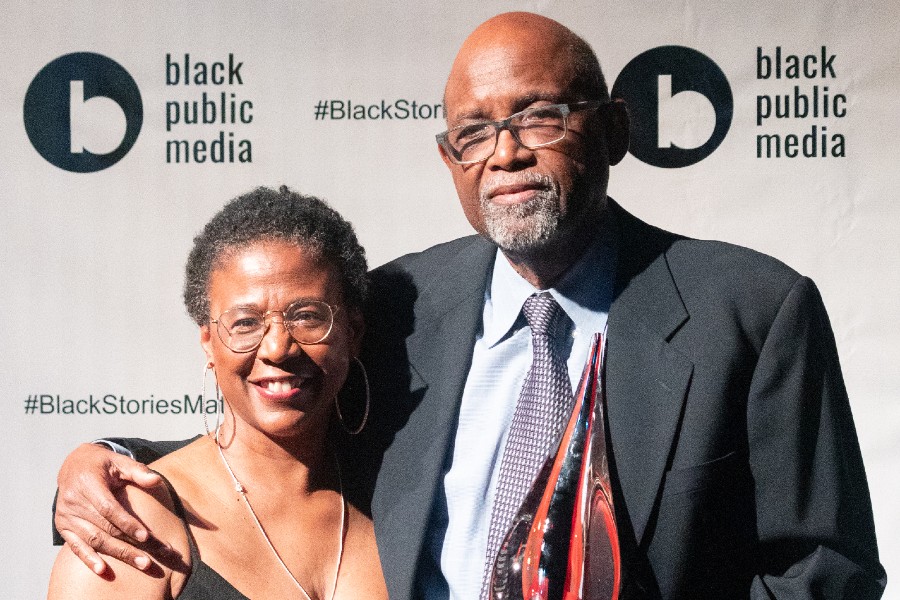 The Nieman Lab reports that Nikole Hannah-Jones has heard all the excuses for why newsrooms can’t hire more reporters of color.
The Nieman Lab reports that Nikole Hannah-Jones has heard all the excuses for why newsrooms can’t hire more reporters of color.
“The one you hear the most is: ‘We’d love to fill these positions with diverse candidates, but we can’t find anyone who is qualified,’” said Hannah-Jones, a reporter at The New York Times Magazine.
Fueled by that frustration, Hannah-Jones last summer helped launch the Ida B. Wells Society for Investigative Reporting, a training and mentorship organization that aims to increase the numbers and retention rate of reporters and editors of color in newsrooms. (Its namesake, Ida B. Wells, was of course the journalist and activist who investigated lynching in the United States in the 19th century.) The group is based on the idea that while investigative reporting is some of the most critical work journalists do, few of the people doing that work are non-white — a failure that Hannah-Jones says leaves a lot of stories uncovered or undercovered. (The group says this focus on investigative reporting sets it apart from organizations like the National Association of Black Journalists.)
“There are a lot of journalists of color who want to be doing [investigative] reporting, but don’t see a path for themselves and have never seen other journalists of color doing this job,” said Hannah-Jones. “When you learn about journalism heroes in college, they are white — usually white men. It’s important that journalists of color see themselves in these positions and get to be trained by people whose experiences are similar to theirs.”
The importance of diversity is, for many news organizations, self-evident. In its 2020 report published in January, The New York Times made the case for a more diverse newsroom, calling it “critical to our ability to produce a richer and more engaging report. It is also vital to our strategic ambitions.” BuzzFeed’s Ben Smith wrote in 2014 that increasing newsroom diversity “helps editorial organizations avoid the bland and often false conventional wisdom held in a room full of people who come from similar places.”
But minority journalists represented just 17 percent of newsrooms’ workforce in 2016, according to data from the American Society of News Editors, which surveyed 737 news organizations. Black people represented just 5.3 percent of all newsroom staff and 4.7 percent of leadership positions.
These realities were fundamental to the creation of the Ida B. Wells Society. The idea for the project came during 2015’s NICAR conference, where Hannah-Jones, along with cofounders Corey Johnson, Topher Sanders, and Ron Nixon — reporters at The Tampa Bay Times, ProPublica, and The New York Times, respectively — realized that they were just about the only black people at the event, Hannah-Jones said.
Since last summer, the group has held three two-day journalism bootcamps that teach attendees skills including making FOIA requests, managing investigative projects, pitching stories, and doing data-assisted reporting. Over 130 people signed up to attend the three sessions, which were held at Wake Forest University and the CUNY Graduate School of Journalism and quickly sold out despite minimal promotion. Prices for the events were kept low ($25 for society members, $50 for non-members) because “cost is often an issue for journalists of color, often because their newsrooms aren’t paying for their training,” Hannah-Jones said. The Ida B. Wells Society plans to extend the events to more states by partnering with universities around the country.
Beyond teaching journalists new skills, the bootcamps also presented successful black reporters as role models to younger reporters. (Many attendees remarked that the training sessions were the first journalism events they had been to that were run by black people.) This idea is also core to the society’s mentorship program, which is still in development. The program will pair new or mid-career journalists with veteran reporters who will be able to offer both career advice and guidance on story ideas and ongoing projects. It will be designed for journalists who don’t have those kinds of relationships in their own newsrooms.
“All of us got where we are because we had a connection with a more veteran reporter who could guide us as we were trying to become investigative reporters,” Hannah-Jones said. “This is about understanding that, often, journalists of color are not seen in or groomed into these roles.”
The society’s efforts have been hampered, however, by resource constraints. Run part-time by its founders, it has no full-time staff. CUNY has provided space and is a fiscal sponsor, and the organization is in the midst of grant writing with the goal of hiring full-time people and rolling out new projects more quickly.
Doing more at scale is critical to the long-term mission of the organization, which aims to significantly grow its membership and build a pipeline that connects journalists directly with newsrooms. “If we do this right, it’s going to make it much harder for newsroom managers to pretend they can’t find people to fill positions,” Hannah-Jones said. “When they say, ‘We can’t find anyone who is qualified,’ we can give them people. And we will know exactly what these people can do, because we trained them.”
Become a Harlem Insider!
By submitting this form, you are consenting to receive marketing emails from: Harlem World Magazine, 2521 1/2 west 42nd street, Los Angeles, CA, 90008, https://www.harlemworldmagazine.com. You can revoke your consent to receive emails at any time by using the SafeUnsubscribe® link, found at the bottom of every email. Emails are serviced by Constant Contact








